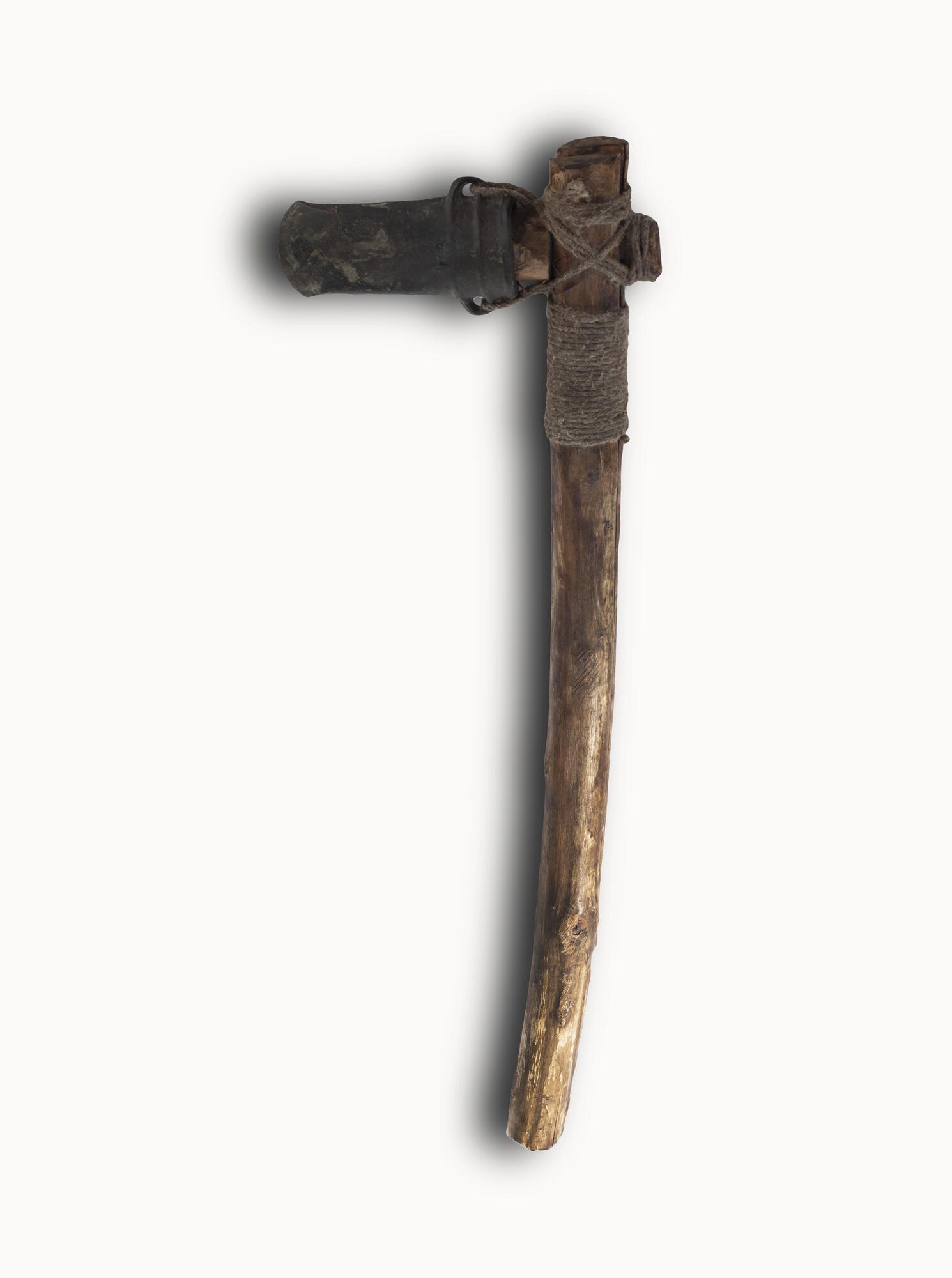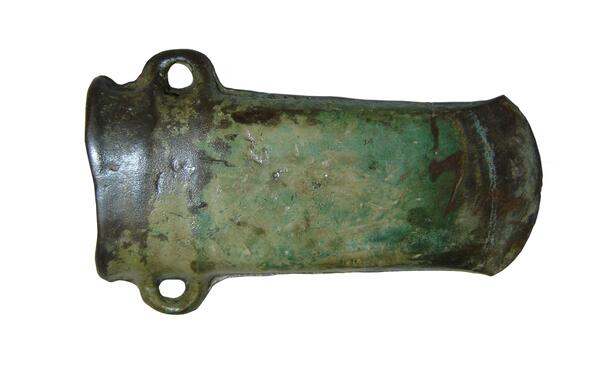The Kursk Regional Museum of Archaeology houses two celts.
A celt is a type of axe made of copper or bronze. This tool first appeared in the Late Eneolithic period (from about 2500 to 1800–1700 BC) and became widespread during the Bronze Age.
One of the two axes on display in the museum dates back to the Early Bronze Age. In order to clearly demonstrate its use, a wooden shaft was made and attached to the artifact. The reconstruction was carried out taking into account all the technological particularities of ancient times. The axe belongs to the double-eared сelts and has a sleeve in place of the head, directed perpendicular to the blade, into which a cranked or straight wooden shaft was inserted. The front part is hexagonal-oval in cross-section. The blade has small extensions at the ends. The axe is 13 cm long, 5 cm high and 4.5 cm wide. Since the item is an accidental find, it can be dated between the second half of the 3rd millennium and the beginning of the 2nd millennium BC.
According to the research of Evgeny Nikolaevich Chernykh, a Russian archaeologist and historian, this axe can be attributed to a group of Balkan-Carpathian and Central European tools. Analogues were found on the territory of modern Ukraine near the city of Poltava, near the village of Medvin in the Bohuslav district of the Kiev region, near the settlement of Nizhny Serogoz of the former Taurida governorate, as well as near the village of Kuchegur between the farmyard of Pantaka and the village of Rybachie near Kherson.
Among the celt tools, scientists also distinguish celt adzes and celt hoes. There is a huge variety of types of axes known to science: there are axes with a sleeve or recess; completely flat ones or with small protrusions on the sides. Some celt axes have extra bent side projections, so that only a special shaft can be used. Such axes were called palshtabs. These tools were used for woodworking as an axe, adze or chisel, and also as a proper fighting weapon.
A celt is a type of axe made of copper or bronze. This tool first appeared in the Late Eneolithic period (from about 2500 to 1800–1700 BC) and became widespread during the Bronze Age.
One of the two axes on display in the museum dates back to the Early Bronze Age. In order to clearly demonstrate its use, a wooden shaft was made and attached to the artifact. The reconstruction was carried out taking into account all the technological particularities of ancient times. The axe belongs to the double-eared сelts and has a sleeve in place of the head, directed perpendicular to the blade, into which a cranked or straight wooden shaft was inserted. The front part is hexagonal-oval in cross-section. The blade has small extensions at the ends. The axe is 13 cm long, 5 cm high and 4.5 cm wide. Since the item is an accidental find, it can be dated between the second half of the 3rd millennium and the beginning of the 2nd millennium BC.
According to the research of Evgeny Nikolaevich Chernykh, a Russian archaeologist and historian, this axe can be attributed to a group of Balkan-Carpathian and Central European tools. Analogues were found on the territory of modern Ukraine near the city of Poltava, near the village of Medvin in the Bohuslav district of the Kiev region, near the settlement of Nizhny Serogoz of the former Taurida governorate, as well as near the village of Kuchegur between the farmyard of Pantaka and the village of Rybachie near Kherson.
Among the celt tools, scientists also distinguish celt adzes and celt hoes. There is a huge variety of types of axes known to science: there are axes with a sleeve or recess; completely flat ones or with small protrusions on the sides. Some celt axes have extra bent side projections, so that only a special shaft can be used. Such axes were called palshtabs. These tools were used for woodworking as an axe, adze or chisel, and also as a proper fighting weapon.



